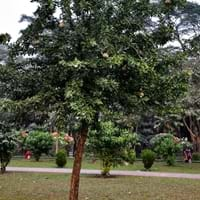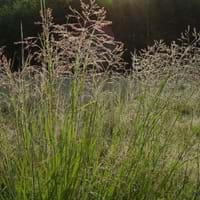Life Span
Perennial
Perennial
Origin
Bangladesh, India, Pakistan, Sri Lanka, Tropical Indomalaya
North America, Canada, Mexico, China
Types
Not Available
Not available
Habitat
Dry areas
All sorts of environments
USDA Hardiness Zone
Not Available
5-9
AHS Heat Zone
Not Available
9 - 1
Sunset Zone
Not Available
1a, 1b, 2a, 2b, 3a, 3b, 4, 5, 6, 7, 8, 9, 10, 11, 14, 15, 16, 17, 18, 19, 20, 21, 22, 23
Habit
Not Available
Upright/Erect
Flower Color
White
Orange, Purple
Flower Color Modifier
Not Available
Bicolor
Fruit Color
Greyish Brown, Light Green, Not Available
Brown, Light brown
Leaf Color in Spring
Green
Blue Green, Steel Blue
Leaf Color in Summer
Dark Green
Light Green
Leaf Color in Fall
Green
Blue Green, Steel Blue
Leaf Color in Winter
Gray Green
Tan, Sandy Brown
Leaf Shape
Ovate
Orbicular
Plant Season
Autumn
Spring, Summer, Fall, Winter
Sunlight
Full Sun, Partial Sun
Full Sun, Partial Sun
Type of Soil
Rich
Clay, Loam, Sand
The pH of Soil
Acidic, Neutral
Acidic, Neutral, Alkaline
Soil Drainage
Well drained
Average
Bloom Time
Late Fall
Early Summer, Summer, Late Summer
Tolerances
Drought
Pollution, Drought, Soil Compaction
Where to Plant?
Ground, Pot
Container, Ground, Pot
How to Plant?
Budding, Layering, root cutting, Seedlings
Seedlings
Plant Maintenance
Low
Medium
Watering Requirements
Do not water excessively
Average Water Needs
In Summer
Lots of watering
Lots of watering
In Spring
Moderate
Moderate
In Winter
Average Water
Average Water
Soil pH
Acidic, Neutral
Acidic, Neutral, Alkaline
Soil Type
Rich
Clay, Loam, Sand
Soil Drainage Capacity
Well drained
Average
Sun Exposure
Full Sun, Partial Sun
Full Sun, Partial Sun
Pruning
Prune after harvesting, Remove dead or diseased plant parts
Remove damaged leaves, Remove dead branches, Remove dead leaves
Fertilizers
for fruiting plants, use high phosphorous content fertilizer
All-Purpose Liquid Fertilizer
Pests and Diseases
Not Available
Aphids, Rust, Spider mites
Plant Tolerance
Drought
Drought
Flower Petal Number
Single
Single
Foliage Texture
Medium
Fine
Foliage Sheen
Matte
Matte
Attracts
Not Available
Birds
Allergy
Gastric
Scratches
Aesthetic Uses
Not Used For Aesthetic Purpose
Not Available
Beauty Benefits
Good Cleanser
Not Available
Environmental Uses
Not Available
Air purification, Biodegradable plastics production, Soil conservation
Medicinal Uses
Blood cleanser, Diabetes, Ear ache, Energy, Kidney problems, Liver Protection, Malaria, Respiratory Disorders, scurvy, Snakebite
Not Available
Part of Plant Used
Fruits
Not Available
Other Uses
Used As Food, Used for its medicinal properties
Animal Feed, Used to feed livestock
Used As Indoor Plant
No
No
Used As Outdoor Plant
Yes
Yes
Garden Design
Edible, Fruit Tree
Edging, Feature Plant, Foundation, Mixed Border, Wildflower
Botanical Name
Limonia acidissima
PANICUM virgatum 'Dallas Blues'
Common Name
Wood apple, monkey fruit, curd fruit
Dallas Blues Switchgrass, Switchgrass
In Hindi
कबिट
Dallas Blues Grass
In German
Indischer Holzapfel
Dallas Blues Grass
In French
Kawista
Dallas Blues Grass
In Spanish
Kawista
Dallas azules Hierba
In Greek
γλυκό ασβέστη
Dallas Blues Grass
In Portuguese
Limonia
Dallas azuis da grama
In Polish
Feronia słoniowa
Dallas Blues Grass
In Latin
dulcis ad cinerem
Dallas Blues Grass
Phylum
Magnoliophyta
Magnoliophyta
Class
Magnoliopsida
Liliopsida
Clade
Angiosperms, Eudicots
Angiosperms, Commelinids, Monocots
Tribe
Citreae
Not Available
Subfamily
Aurantioideae
Panicoideae
Importance of Wood Apple and Dallas Blues Grass
Want to have the most appropriate plant for your garden? You might want to know the importance of Wood Apple and Dallas Blues Grass. Basically, these two plants vary in many aspects. Compare Wood Apple and Dallas Blues Grass as they differ in many characteristics such as their life, care, benefits, facts, etc. Every gardener must at least have the slightest clue about the plants he wants to plant in his garden. Compare their benefits, which differ in many ways like facts and uses. The medicinal use of Wood Apple is Blood cleanser, Diabetes, Ear ache, Energy, Kidney problems, Liver Protection, Malaria, Respiratory Disorders, scurvy and Snakebite whereas of Dallas Blues Grass is Not Available. Wood Apple has beauty benefits as follows: Good Cleanser while Dallas Blues Grass has beauty benefits as follows: Good Cleanser.
Compare Facts of Wood Apple vs Dallas Blues Grass
How to choose the best garden plant for your garden depending upon its facts? Here garden plant comparison will help you to solve this query. Compare the facts of Wood Apple vs Dallas Blues Grass and know which one to choose. As garden plants have benefits and other uses, allergy is also a major drawback of plants for some people. Allergic reactions of Wood Apple are Gastric whereas of Dallas Blues Grass have Scratches respectively. Having a fruit bearing plant in your garden can be a plus point of your garden. Wood Apple has no showy fruits and Dallas Blues Grass has showy fruits. Also Wood Apple is not flowering and Dallas Blues Grass is not flowering . You can compare Wood Apple and Dallas Blues Grass facts and facts of other plants too.





